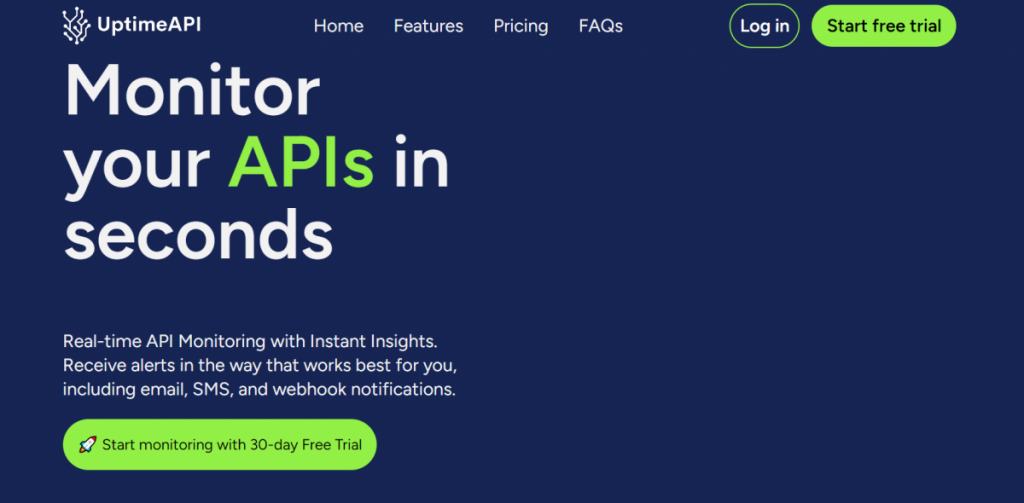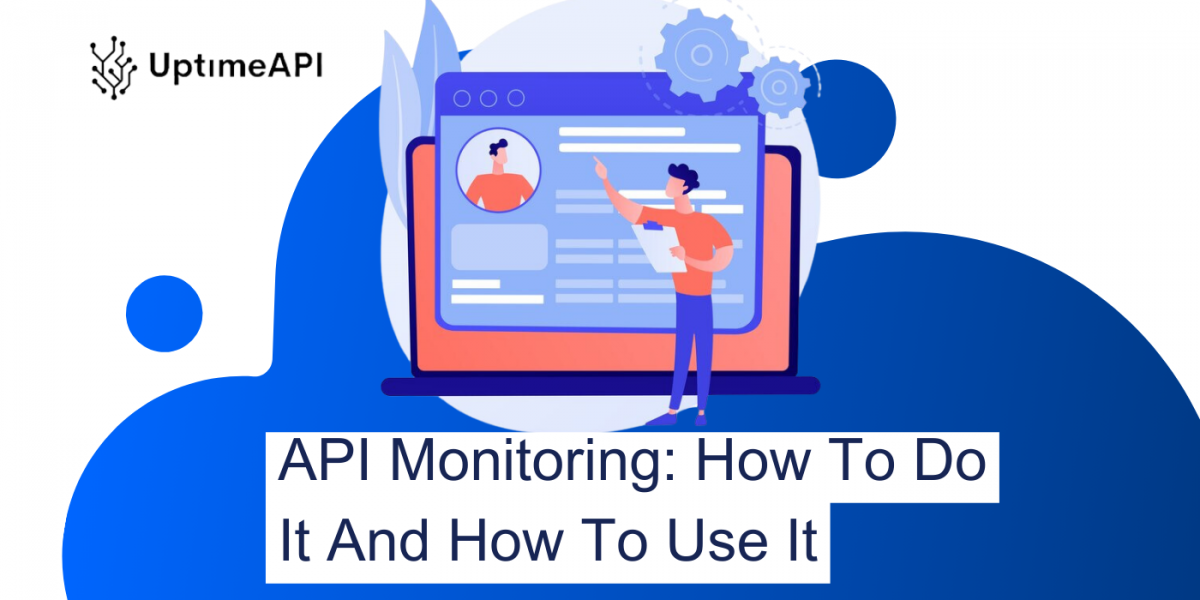In the fast-paced world of technology, where seamless connectivity is paramount, Application Programming Interfaces (APIs) play a crucial role. APIs enable different software applications to communicate and share data, facilitating the smooth functioning of numerous digital services. However, ensuring the reliability and performance of these APIs is equally important. This is where API monitoring comes into play, and with tools like UptimeAPI, the process becomes not only efficient but also user-friendly.
Understanding API Monitoring:

API monitoring involves the continuous observation of API endpoints to detect and address issues promptly. It aims to ensure that APIs are performing optimally, meeting response time expectations, and delivering accurate data. Effective monitoring contributes to enhanced user experiences, reduced downtime, and improved overall system performance.
How to Implement APIs Monitoring:
Define Monitoring Objectives:
Before diving into API monitoring, clearly outline your objectives. Identify the key performance indicators (KPIs) that matter most to your application. This could include response time, error rates, and throughput.
Choose the Right Monitoring Tool:
Selecting the appropriate monitoring tool is crucial. UptimeAPI stands out as a reliable choice, offering a user-friendly interface and robust features. Sign up for an account, and you’ll be ready to start monitoring your APIs effortlessly.
Set Up Monitoring Checks:
With UptimeAPI, setting up monitoring checks is straightforward. Define the API endpoints you want to monitor, specifying the request type (GET, POST, etc.) and expected response codes. UptimeAPI will then regularly check these endpoints and alert you if any issues arise.
Configure Alerting Mechanisms:
Configure alerts to receive immediate notifications when UptimeAPI detects anomalies or downtimes. Email notifications, Slack messages, or SMS alerts can be set up to ensure that you’re promptly informed about any issues.
Establish Frequency of Checks:
Determine how frequently you want UptimeAPI to monitor your APIs. Depending on your application’s needs, you can set up checks to occur every few minutes or at specific intervals.
Utilizing API Monitoring Data:

Performance Optimization:
The data collected through API monitoring provides valuable insights into the performance of your APIs. Analyze response times and error rates to identify bottlenecks and areas for improvement. With this information, you can optimize your API endpoints for better efficiency.
Proactive Issue Resolution:
API monitoring allows you to be proactive in addressing issues before they impact users. By receiving real-time alerts, you can swiftly investigate and resolve potential problems, minimizing downtime and maintaining a seamless user experience.
Capacity Planning:
Understanding the usage patterns and performance metrics obtained from API monitoring aids in capacity planning. Anticipate future needs, allocate resources effectively, and ensure your infrastructure can handle increasing demands.
User Experience Enhancement:
By continuously monitoring APIs, you can enhance the overall user experience. Detecting and rectifying issues promptly ensures that users can access your services without disruptions, fostering trust and satisfaction.
Compliance and Reporting:
API monitoring tools like UptimeAPI often provide reporting features. Generate regular reports on API performance, which can be valuable for compliance purposes or for sharing insights with stakeholders.
Conclusion:
In conclusion, API monitoring is a fundamental aspect of maintaining a reliable and efficient digital infrastructure. With tools like UptimeAPI, the process becomes accessible and effective, even for those without extensive technical expertise. By implementing API monitoring, businesses can ensure the optimal performance of their APIs, leading to improved user experiences, reduced downtimes, and a proactive approach to issue resolution. Stay ahead in the digital landscape by embracing API monitoring and leveraging tools that simplify the process.

